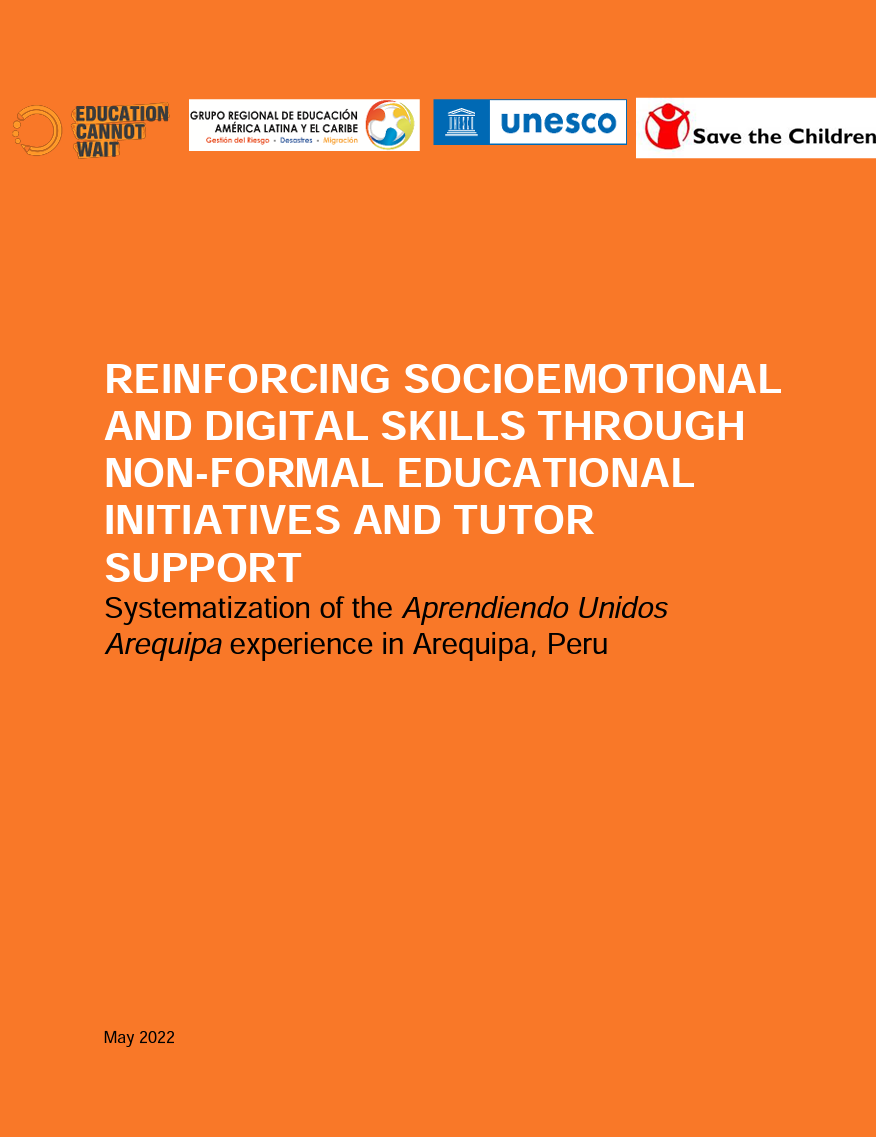
Reinforcing Socioemotional and Digital Skills Through Non-Formal Educational Initiatives and Tutor Support: Systematization of the Aprendiendo Unidos Arequipa experience in Arequipa, Peru
Publication year:
2022
English
Format:
PDF (729.0 KiB)
Publisher:
Save the Children International,Save the Children Peru
Aprendiendo Unidos Arequipa, or Learning United Arequipa project, was implemented by United Nations Educational, Scientific and Cultural Organization (UNESCO) and United Nations High Commissioner for Refugees (UNHCR) in the city of Arequipa in Peru with the aim of empowering Venezuelan migrant and refugee children and youth ages 6 to 17 to strengthen their digital and socioemotional skills that will enable them to enter the formal education system in Peru. The project, which ran from November 2021 to January 2022, engaged stakeholders from UNESCO, UNHCR, parents, tutors, and students through a non-formal education project in virtual modality, training, mentoring, active communication, coordination, and support activities.
Through a systematization effort of project activities and using the framework of UNESCO’s ‘five dimensions of the right to education,’ information was gathered in the project’s context, actions, achievements, success factors, challenges, lessons learned, and possibilities for replicability. The project prioritized activities which bolstered the acceptability and accessibility of non-formal education. Despite challenges related to the COVID-19 pandemic, xenophobia, complex implementation schedules, insufficient internet connectivity or access to electronic devices, the project succeeded in reaching 400 Venezuelan migrant and refugee children and adolescents. The project was supported by strong collaboration between parents and tutors, project implementers and regional education authorities, the presence of complementary skills from different actors, the use of e-learning systems and virtual tools, and provision of socioemotional support to students and families. Analysis of lessons learned, and discussion of project sustainability and replication can inform the continuation and/or expansion of the project within and beyond the Peruvian, migrant, and refugee educational contexts.
Read full abstract
View & Download
Document information
Format
Country
Region
Rights
© Author/Publisher
Found a mistake? Help us improve!
If you have noticed a document assigned to the wrong author or any other inaccuracies, let us know! Your feedback helps us keep our data accurate and useful for everyone.
Share
Link
